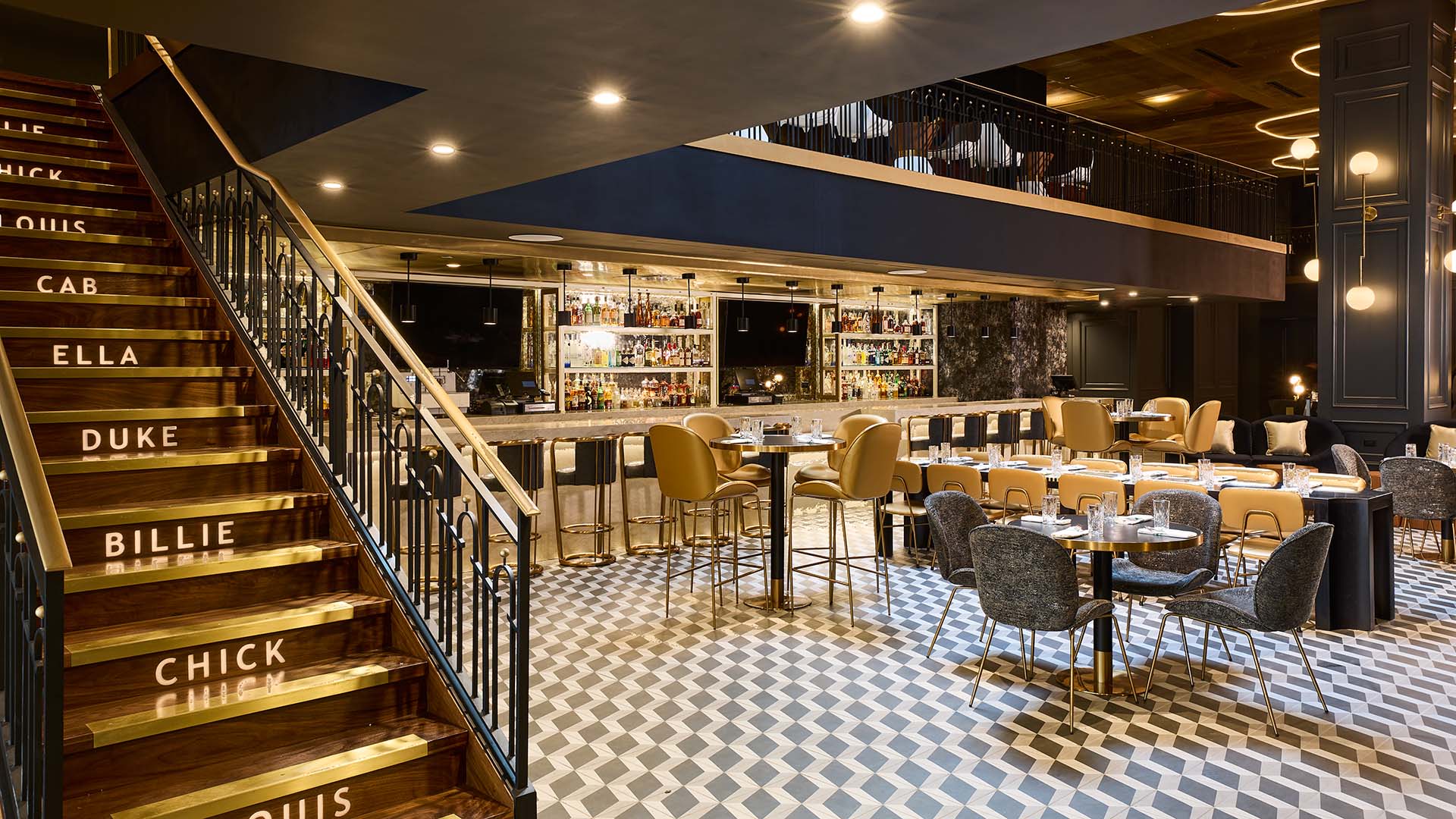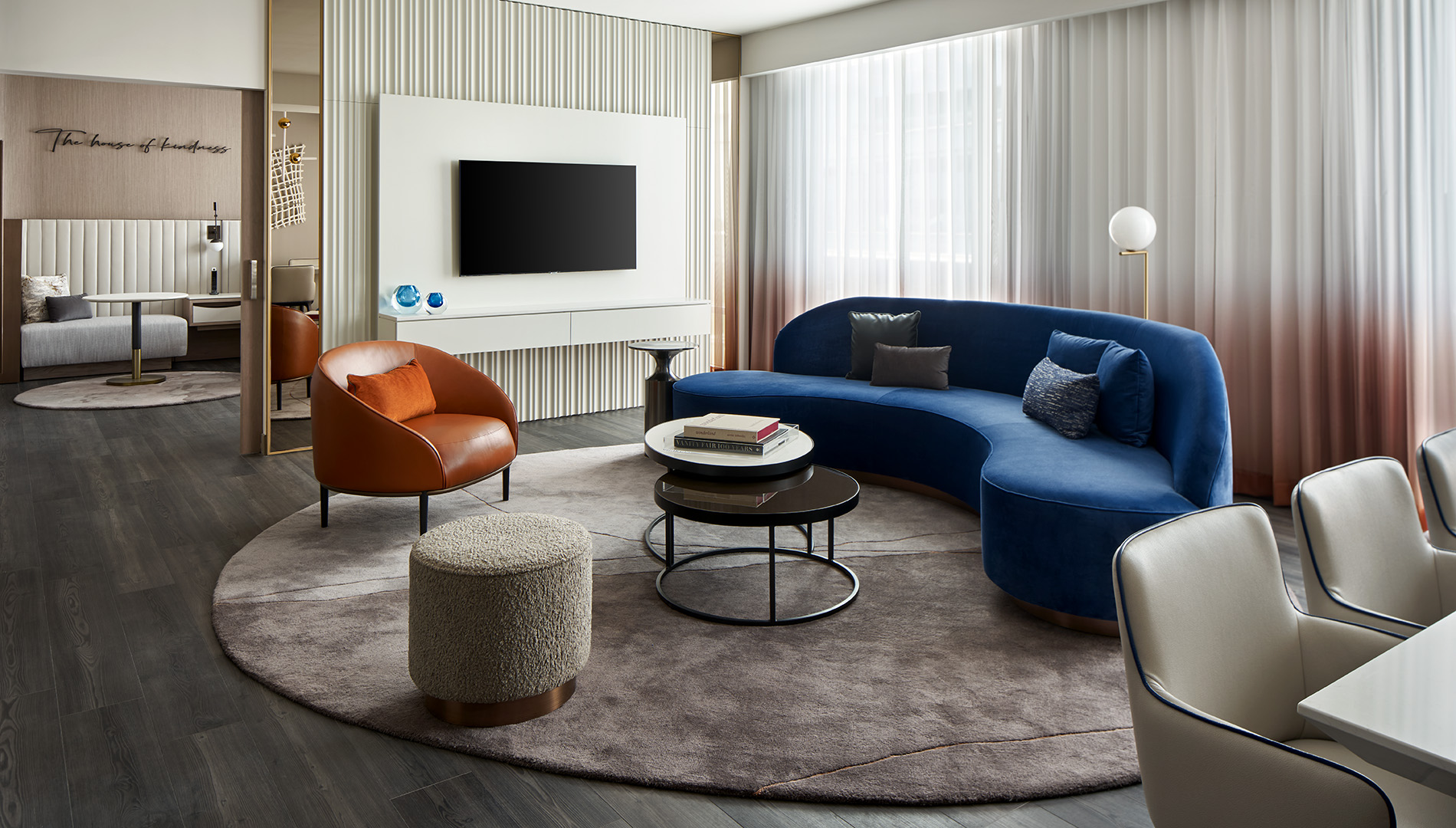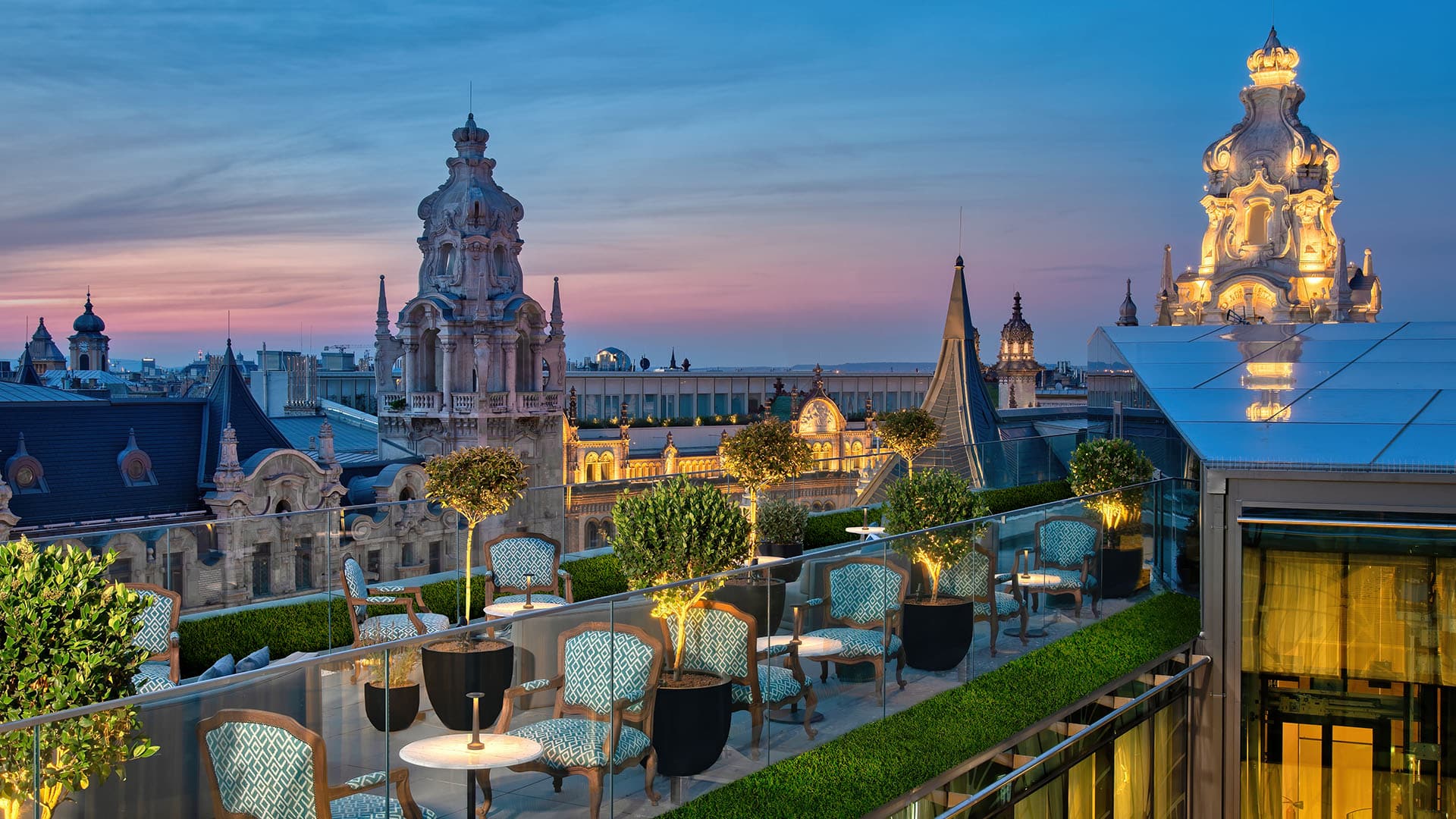
Get lost in the palace views. (Photo: Marriott International)
Travel by DesignBecome Royalty at Budapest’s Matild Palace, a Luxury Collection Hotel
By Hamish KilburnPicture the grand entrance to an Austro-Hungarian palace from the late 19th century, complete with iron-wrought gates and a vaulted ceiling. A beautiful blend of art styles that includes Art Nouveau, Baroque, and Romanesque. Ornate finishings on everything, from handle rails to columns and ceilings. A color palette that reflects the city’s rooftops in teal, green, gold and copper.
These sights are just a hint of the bridge to Budapest’s history that is Matild Palace — a Luxury Collection hotel, housed in the painstakingly restored palace that originally brought into being by Her Imperial and Royal Highness Maria Klotild, of Saxe-Coburg and Gotha.
Perched at one end of the Elisabeth Bridge in the heart of Hungary’s capital city, Matild Palace is a master class in how to honor a UNESCO-protected site while elevating all of its interiors to feel timeless. Guest beds feature full-height, leather embossed headboards with an art deco pattern inspired by the Hungarian classic, The Adventures of Sinbad.
The bathrooms here can function as steam rooms, evoking the ancient natural spas of Budapest — while offering all the modern comforts of a contemporary wellness spa. And the breathtaking Duchess rooftop bar and garden channel the socialite spirit of its benefactor, who had envisioned this hideaway as a haven for embracing one’s joie de vivre.
In this episode, host Hamish Kilburn catches up with his friend, Maria Katsarou Vafiadis — founder of London-based MKV Design and the interiors designer behind the intricate reimagination of Matild Palace.
PODCAST TRANSCRIPT
HAMISH: I’d like to travel back in time for just a moment… to the dawn of the 20th century.
HAMISH: At the time, Europe was experiencing a renaissance in the arts, that would later become known as the Belle Époque Era.
It was a period where art and architecture flourished. And in Budapest, Hungary, the flamboyant Elisabeth Bridge had just linked the two sides of the city, Buda and Pest — which, to this day, are split by the River Danube.
It was here that Her Imperial and Royal Highness — Maria Klotild of Saxe-Coburg and Gotha — envisioned a palace, which would act as a grand gateway, from the bridge into the urban heart of the city.
Maria: The building is beautiful. It has this jewel-like quality. When you look at it from a distance, you can almost see every single detailing around the windows, on the rooftops, on the cornicing, on the balconies, on everything.
HAMISH: But the beauty of the palace wasn’t only to be admired from the outside. Because from inside the building, the guests — who came here to socialize and celebrate life — could look across the river, to the other side of the capital.
Maria: And on the other side of the river, opposite the bridge, you don’t really see a city, but you see a hill, which is all covered in green.
The colors work so well in harmony with our interior, so when you open your window and you look inside and outside, it’s almost having a conversation with nature.
HAMISH: While the Elisabeth Bridge was destroyed during the Second World War, and replaced by a more functional, brutalist structure… the palace — the magnificent gateway and gathering place for writers, artists, and musicians, which the Duchess Maria brought into being — has been rejuvenated.
And it’s still inviting guests to greet the currents of country and city that make Budapest such a vibrant place.
HAMISH: Welcome to Travel By Design, a podcast from Marriott Bonvoy Traveler.
I’m your host, Hamish Kilburn. As the editor of Hotel Designs, I review hotels for a living. And on this podcast, we’re going to hear from architects, designers, and visionaries who have helped create remarkable hotels around the world.
In today’s episode, we’re visiting Matild Palace, a Luxury Collection Hotel, Budapest.
More than a century after its creation, this UNESCO-protected site has been beautifully restored to its former grandeur — while also incorporating modern touches for today’s luxury traveler.
HAMISH: Imagine.
HAMISH: You’re walking up to the entrance to this hotel. And instead of just walking through a door and spotting the check-in desk… you find yourself passing through iron-wrought gates, into a 19th century passageway.
Maria: Intricate design, extremely decorative… the same gates that we had from when the building was built… and going to the passage. It was the space where all the horse carriages will be drawn into the palace, and that would have been the arrival point.
Maria: So the very, very first experience is one of real grandeur.
HAMISH: So much has been restored, and yet so much more has been re-imagined. There’s a beautiful blend of art styles including Art Nouveau, baroque, and Romanesque. Ornate furnishings on everything, from handle rails to columns to ceilings. A color palette that reflects the city’s rooftops in teal, green, gold and copper.
Designing the interiors of this space was no easy feat. And the voice you’ve been hearing is the person who brought it to life: Maria Katsarou Vafiadis, founder of London-based MKV Design.
We started our conversation with a deep dive into that palatial passage, where guests walk through as they enter Matild Palace.
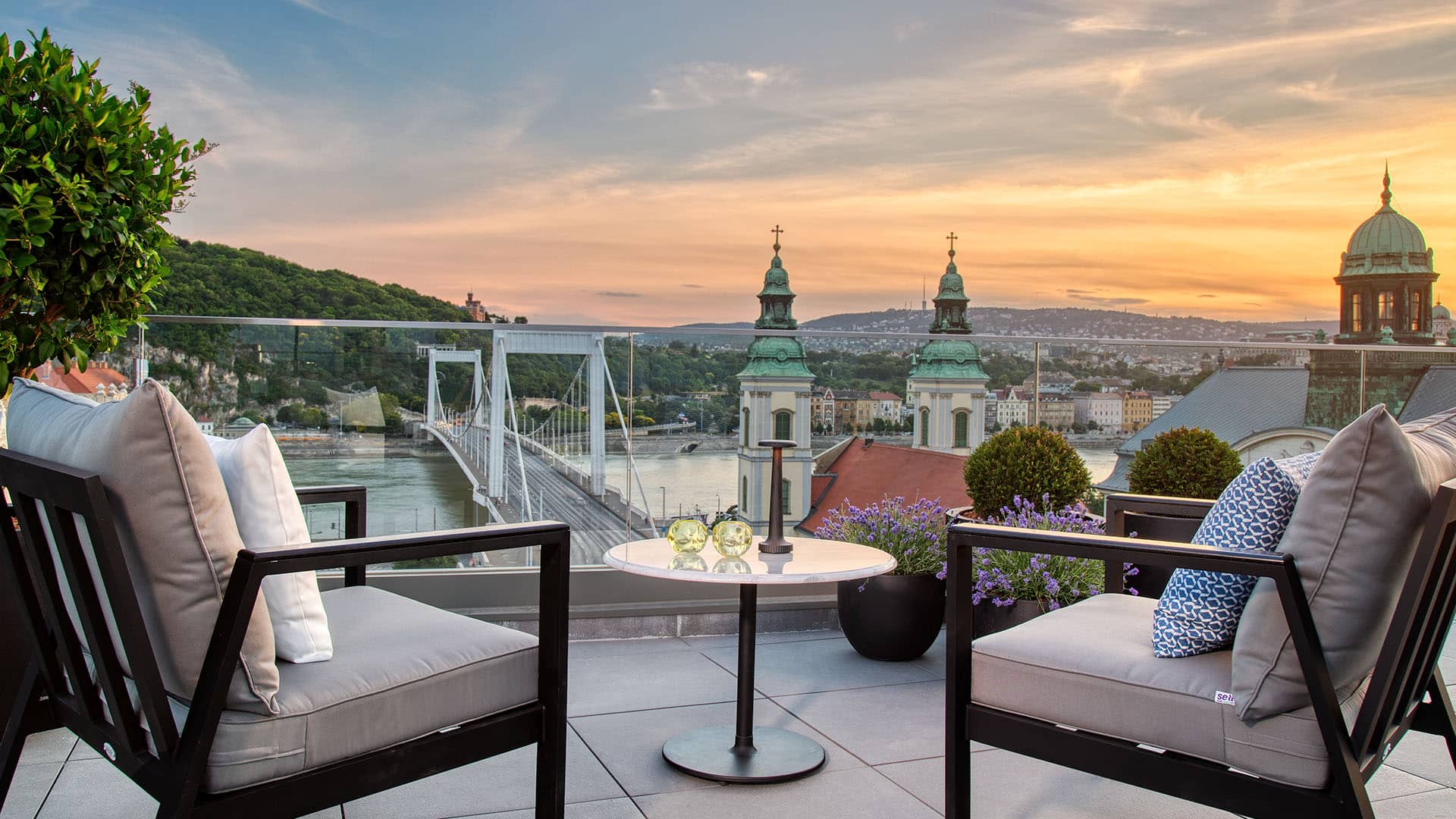
INTERVIEW
Maria: The passage is quite unique. Ornate plaster work on the ceilings. Beautiful interiors. I haven’t seen, in all my years as a designer, such a beautiful, very intricate, but at the same time, extremely sophisticated space like the passage.
Hamish: Fantastic. Yeah, it’s a really interesting process, and I feel like you’ve challenged what we should expect from the typical idea of a luxurious building. Everything feels very grand, yet very delicate, and so, I love how you’ve done that.
Maria: Thank you. Thank you.
Hamish: And it does kind of reflect, as well, the presence of Maria Klotild, the Duchess herself.
Maria: Yes. And the whole design is really based on craftmanship, on what the duchess herself would have expected to have in her palaces. Beautiful metal work, jewel-like detailing, plush fabrics, very sculptural elements for the reception…
Maria: And her presence is there, because right in front of you, in the lounge, on top of the fireplace, you will see her portrait, but the portrait is not something old. It’s something new.
Maria: And then all around her, you will see all the black and white photos of Budapest, scenes of the city from when the palace was built. But the rest is really very modern, very neutral, very comfortable.
Maria: It’s almost bridging the olden times to today — and giving a more comfortable space for guests to feel welcomed and to feel very special.
Hamish: Mmmm.
Hamish: So after guests walk through the passageway, what do they see next? How does the design of the palace welcome them further inside?
Maria: Every room in the form of these old palaces and buildings in central Europe, not only in Budapest, every room is leading onto another.
Maria: This is the formal way of going in palaces from one room into the other, so from the passage, you can go into the reception desk, then you can go into the lounge. This is almost a procession. And then you go into the bar, and the bar —
Hamish: It’s such a free flowing space.
Maria: — yes, a flowing space. Exactly. And the bar opens up onto the restaurant, which then opens up onto the terrace, that then overlooks the beautiful pedestrian street and is semi-covered. It’s open during the summer and closed during the winter, so — it’s a succession of spaces. From one, you go into the other, into the other, like in the apartments that you will have in the buildings of the city. It’s quite normal in central Europe to have this kind of configuration.
Hamish: Well I find it interesting that you mention that comparison to apartment layouts, because I’ve — um, I’ve been in lots of apartments, lots of flats. I’ve also checked into lots of hotels in my time. But I don’t think I’ve checked into many palaces. (chuckles)
Hamish: So, so what’s the difference? When you’re designing within a palace setting, in terms of the feeling you’re creating, when you walk into the public areas, which have such a regal tone? But aren’t… aren’t supposed to feel overbearing.
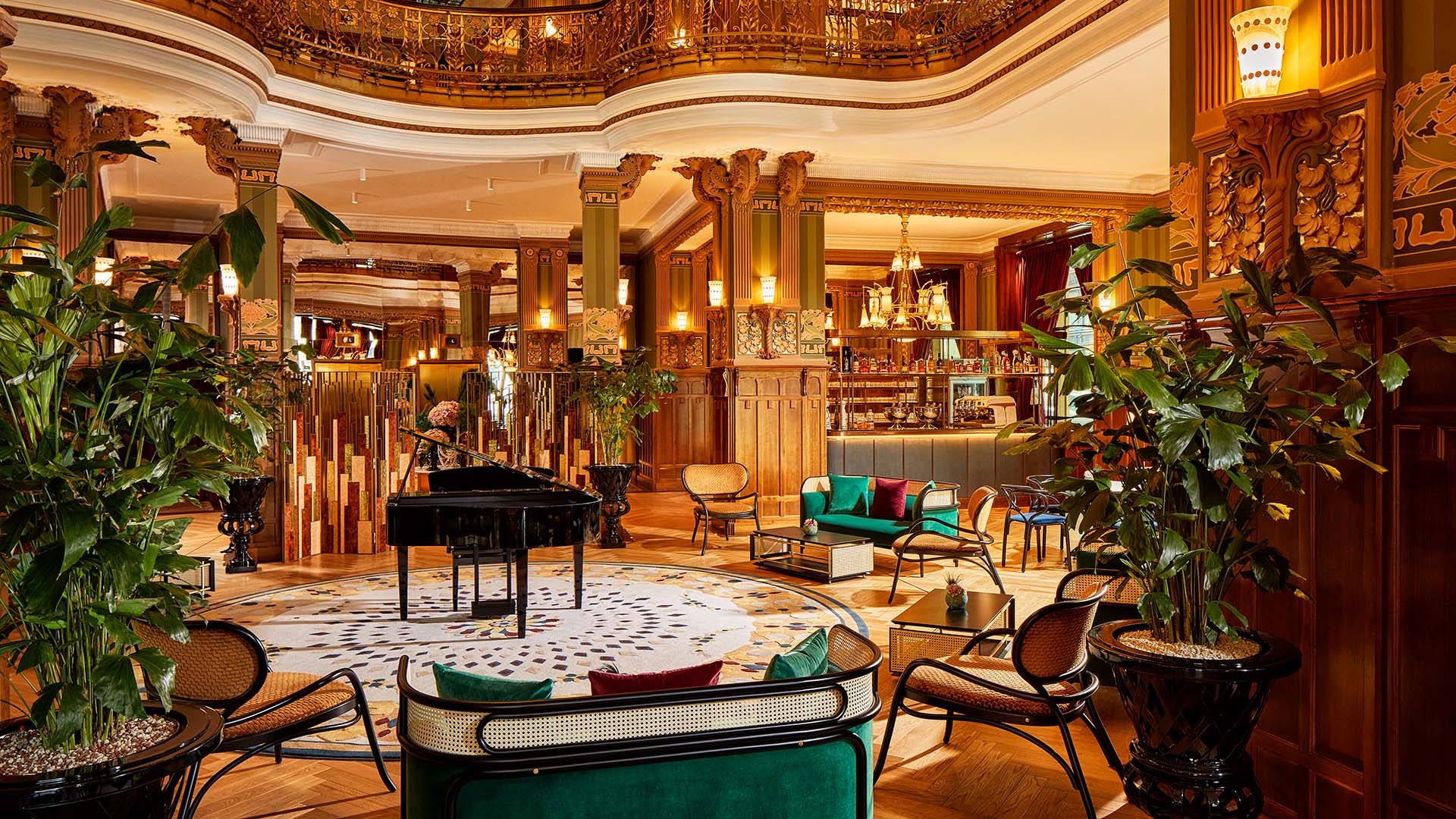
Maria: The palaces are always grand in scale, and this is a big palace. Nevertheless…they have a human scale.
Maria: For us, the challenge was to work with this human scale, to make it very luxurious with the choices of materials and detailing that we have used, rather than using the grand scale. So the grand scale is almost secondary in this hotel. And that I believe makes guests feel much more comfortable.
Hamish: And as well as structure, you know, the spaces being broken down into different rooms, different areas. How do you create intimacy in these grand spaces?
Maria: You just bring the scale down to become more of a human scale. If you have a very, very big room, then you start creating little nooks and different zones where people can feel more comfortable. And this is what we did with the lounge — we kept the central part of the lounge with a big height, as the entrance point where everyone comes in from the passage, but then we almost created a little smaller zones at the two corners for people to sit down… and it also depends what kind of furnishings you use.
Maria: Although the, the space is quite grand, the way it’s furnished is much more geared towards our today type of life and how we use spaces in today’s life. If you want to sit there, have a coffee and work, you can do it very informally.
Hamish: Yeah, I can so imagine just being wrapped up in a corner of that lounge during winter, just, you know, feeling the warmth from the interiors, but actually seeing the cold and all those natural elements on the outside. I just feel as if that would be such a cozy space, to just chill.
Maria: Definitely.
Hamish: But at the same time — it’s such an iconic piece of architecture. And surely with some limitations on how much could be changed. So tell me about creating something new while respecting the heritage.
Maria: When you have to work with buildings, with old heritage buildings, like the one we had in our hands, you simply have to start a dialogue with the building — its own history, how it was built… Why did the people that build it, did it? What did they use?
Maria: We respected the building. We didn’t go against the building. It’s almost as if the building was talking to us and showing us the way forward.
Hamish: Mmm.
Maria: We also looked at the views outside of the windows. What is it really that we were looking at? When guests would open their curtains, they would look at all these amazing buildings surrounding the palace, because it’s not just this palace, there are so many other numerous beautiful buildings in the city.
Hamish: Absolutely.
Maria: And we discovered that there was one color way for Budapest. It’s actually the green turquoise color of the rooftops of the town. When you look at the rooftops, this is what you will always see.
Maria: And the white, the white color. With accents of gold. And the dominant colors in the hotel are those. But we also knew that we are in Budapest. We are in a central European city, part of the Austro-Hungarian empire. So we had to have the intricate parquet floor. Not just simple floor boards, but herring bones, marquetries, et cetera, all these kind of things that fit into the time and the era of the building.
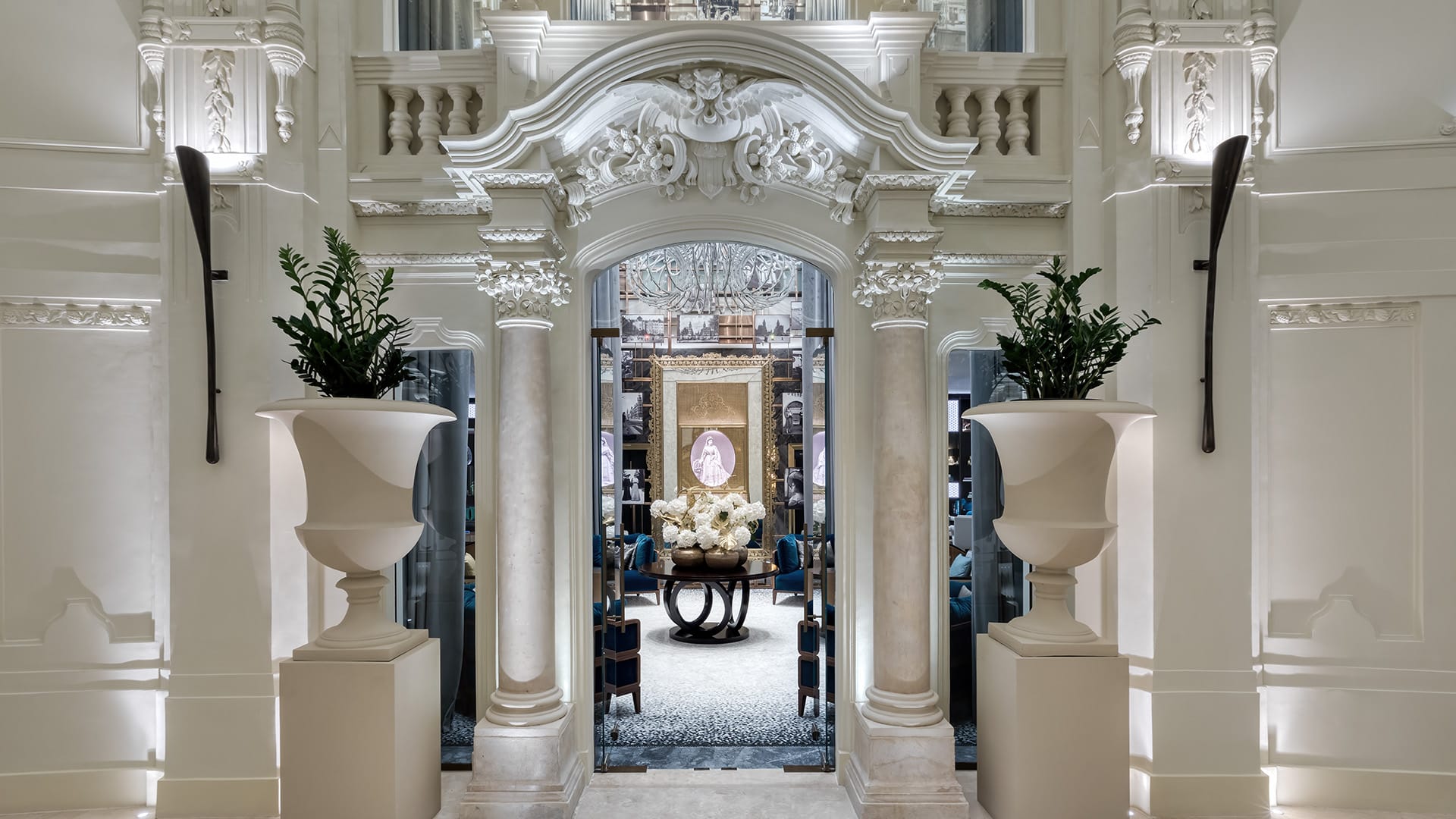
Maria: We also knew that the building itself had a lot of plaster decoration. So what we chose to do in the new rooms of the hotel, like the reception or the lobby lounge, we went with art nouveau-inspired ceramics that almost mimic this kind of decoration that the old plaster work in the building had. But it’s also much, much simpler. It’s not so heavy as the original is.
Hamish: And then tell me how this carries over into the guest rooms. Because they don’t at all feel antiqued or stuck in time. And yet, the feeling you get is like… you, you are getting the royal treatment. And I think this is especially apparent in the bathrooms.
Maria: We knew that Hungary has a very strong presence of baths. The Gellért Baths are in town, and all Hungarians love to go into the baths because they have been there from the Roman times.
Maria: So the bathrooms at Matild Palace, they are not just simple bathrooms. They are mini spas. The colors is as if you are entering the Gellért Baths. They’re made out of hand-cut mosaics in the turquoise colors with small accents of gold. Everything is beautifully made with the best craftmanship ever. Nice marble, a white marble with strong veining. And all the vanities have beautiful mirrors, all adorned with beautiful metal frames.
Maria: We also imagined that the presidential suite wouldn’t just be a standard presidential suite, but it would be her own apartment. And we wanted the presidential suite to feel as if it was done specifically for her: beautiful, inlaid with marquetry furnishings…
Maria: Her bathroom is all white with hand-cut mosaics, in a shape of peacock feathers. Everything is extremely feminine and extremely sophisticated. Really something that a Duchess would have done for herself.
Hamish: Exactly, yeah, I love having that consistent sense of connection and perspective. Not just with the Duchess, but with this timeless feature of — of Budapest itself — the spas, the natural spas, which are preserved all over the city.
Maria: That was the perfect combination for us. That is not only rooted in the Hungarian culture and tradition of bathing, but we also believe it fits very well within the tendency of wellness. We have wet rooms, which means that we do not just have a separate bathtub or a shower, but we combine both into one big room, and that works very well as a steam room or as a tiny hammam room.
Hamish: That sounds lovely.
Maria: We designed these bathrooms with a much more modern look. We loved the combination of hand-cut Venetian glass mosaics with small gold accents, into the steam room itself, into the wet rooms, in combination with the white marble. We like the purity of white marble. We believe it’s one of the best materials for using in, in bathrooms. It can last forever. And it has also a great versatility in using it. We’ve done amazing portals in the wet rooms made all out of this white marble, and the same thing goes on the vanities and on the floor and on the rest of the walls.
Maria: And we just believe that this combination of materials is the best one could use, not only in terms of luxury, but also in terms of longevity. This is a bathroom that will never go out of fashion, and it’s a bathroom that will stay there forever.
Hamish: For sure, and in terms of design trends… I mean, trends come and go. But good design, solid design, really evolves in time. And I feel like with this project, for it to evolve naturally within a palace — it’s, it’s just so beautiful. Was that part of your thinking when you were creating these spaces?
Maria: Yes, definitely. Palaces are not built with fashion in time. Actually palaces set fashion trends, they never follow them. And we didn’t follow anything when we were designing Matild Palace.
Maria: Our inspiration was the city, because we really wanted guests to feel that they are in Budapest; the Duchess herself, the presence of the Duchess, to feel that there was this woman, there, present…
Maria: We imagined that the duchess would have given to her guests the best that exists in the world. And the best is not necessarily the most expensive, but it would be the intricate engraving on the pieces of furniture, the embroidery that you have on the cushions and on the furnishings that adorn her sitting room.
Maria: We wanted guests to experience the palace like royalty. We wanted them to become royalty, and we wanted them to have the experience, the same experience, that the Duchess would have had.
Hamish: Maria, it’s been so lovely catching up with you. Thank you so, so much.
Maria: Thank you very much for giving me the opportunity to talk about Matild Palace.
CREDITS
HAMISH: Travel by Design is a podcast by Marriott Bonvoy Traveler, the online travel magazine where you’ll find more inspiring hotel design stories.
If you’re curious about the craft of hotel design, then check out marriott bonvoy dot com slash travel by design.
This episode was produced by Narratively Creative. Our Lead Producers are Theresa Avila and James Boo. Our Associate Producer is Monica Hunter-Hart. Additional interview recording by Lina Chang.
Story edits by Priscilla Alabi, sound design by Dennis Funk and James Boo — and audio engineering by Dorian Love.
Our Marriott Bonvoy Traveler producers are Jess Moss and Robin Bennefield.
Special thanks to Maria Vafiadis for speaking with me about her work.
I’m your host, Hamish Kilburn. Don’t forget to subscribe to Travel by Design wherever you get your podcasts. And tune in next time to hear more design stories behind the world’s most fascinating hotels.





